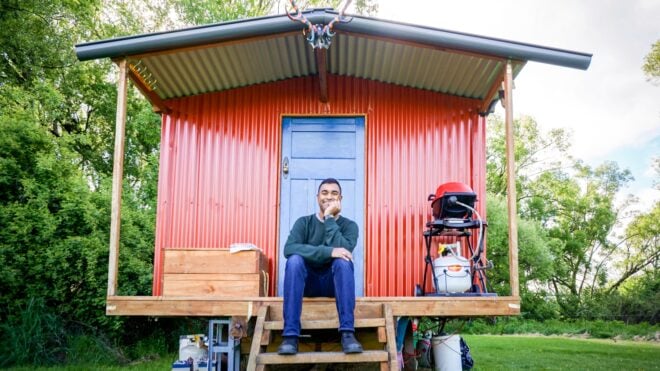Allergy Haven

Your home should be a haven away from allergy triggers. And fortunately, it can be. There are plenty of things you can do inside your home to reduce allergen levels, from cleaning and vacuuming regularly to keeping humidity levels low. Here's an overview of 10 simple steps to take starting today. Your efforts will be rewarded with fewer allergens—and with possibly stopping them from developing in the first place.
Cool and Dry

Keep your home cool and dry. After an 18-month study, Larry G. Arlian, PhD, professor of biological sciences and director of the microbiology and immunology graduate program at Wright State University in Dayton, OH, found that levels of mites and other allergens dropped significantly in homes where the relative humidity was kept below 50 percent. To maintain this level, you may need to use your air conditioner along with a dehumidifier. (If you use a dehumidifier, be sure to empty the water daily—or better yet, have the machine run directly into a drain, if possible.)
To track the humidity level, buy a gauge (called a hygrometer) with a digital readout, for about $30. These are available at hardware stores or from allergy supply companies.
Eliminate Wetness

Get rid of things that have gotten wet. If any carpeting in your home gets wet—from a flood or a burst pipe, for example—thoroughly clean and dry it within 24 hours. If you can't do this, remove the carpeting, since mold is likely to take hold of the material. Also toss out drapes, stuffed toys, ceiling tiles, and upholstered furniture if they get soaked and you can't immediately clean and dry them.
MORE ON PREVENTION: Stop Hidden Allergy Problems
Keep Carpets Small

If you must have carpets, think small. Obviously, hardwood, tile, or linoleum floors are ideal for people with allergies, but if you still feel the need for a soft surface in places, settle for a few washable throw rugs. Just be sure to wash them regularly.
Vacuum Frequently

Vacuum often. If you have wall-to-wall carpeting, frequent vacuuming is a must. When you combine regular vacuuming with low humidity and other precautions, the allergy levels in your house will decline—possibly low enough so that they won't trigger your symptoms, says Arlian. Vacuum your carpets at least once a week, suggests Jonathan A. Bernstein, MD, assistant professor of medicine at the University of Cincinnati Medical Sciences Center, or let a family member or friend who doesn't have allergies do it. A vacuum that has a special double-lined bag, a HEPA (high-efficiency particulate air) filter, or a combination of both will trap more of the carpet allergens.
Ban Smoking

Make your home a no-smoking zone. Smoke is a significant irritant. Secondhand smoke can trigger an asthma attack and aggravate symptoms in people with allergies. In addition, tobacco smoke has been shown to make asthma worse in preschool children—and may even cause it.
MORE ON PREVENTION: Don’t Let Allergies Ruin Your Day
Ventilate

Ventilate your house. If humidity isn't a problem in your area, you may want to open your windows and doors and flip on window or attic fans to air out your house and help blow away pollution and allergens. Just make sure when you open the windows that you don't violate the ever-important guideline of keeping your home's humidity below 50 percent. If you're allergic to pollen that might come in through the open window, you can buy a pollen-proof screen to keep the stuff out of your home.
Avoid Smells

Run a low-odor household. Even if products such as candles and air fresheners smell good, use caution with products that give off smelly fumes—or avoid them outright. These also include aerosols, paints, perfumes, and cleaners. They may irritate your airways and make your allergies and asthma worse.
Dust Often

Dust frequently. Clean the hard surfaces and shiny floors in your home weekly with treated dust rags, damp mops, or damp rags. Don't use a dry cloth or a feather duster, since you'll just fling the allergens in the dust back into the air.
Decorate Minimally

Decorate sparingly. Ceramic figurines, stuffed animals, wicker baskets, and dried flowers may help you express your personality, but they also collect dust. Use them as sparsely as possible.
Clean Filters

Keep filters clean. Regularly clean or replace the filters on your furnace and air conditioners according to the manufacturers' instructions. Generally, when they're in use, you'll need to replace them (or clean them if they are the reusable type) monthly.
MORE ON PREVENTION: Pollen-Proof Your Workouts
Weekly Checklist

· Vacuum
· Launder your sheets and pillowcases in 130 degrees F water
· Dust all flat surfaces, from tabletops to floors, with a damp cloth or mop
· Wipe window shades and/or wash the curtains
· Clean your kitchen, wiping the stovetop, countertop, and cupboards
· Wash your indoor pets, especially cats, after discussing this with your vet.
Monthly Checklist

· Replace your furnace or air-conditioner filterwhile in use
· Wash stuffed animals in 130 degrees F water. If they can't take the stress of washing, put them in a plastic bag in the freezer for a few days.
MORE ON PREVENTION: Enjoy Your Outdoor Time During Allergy Season
Love the plush germs in this story? Find them at GiantMicrobes



